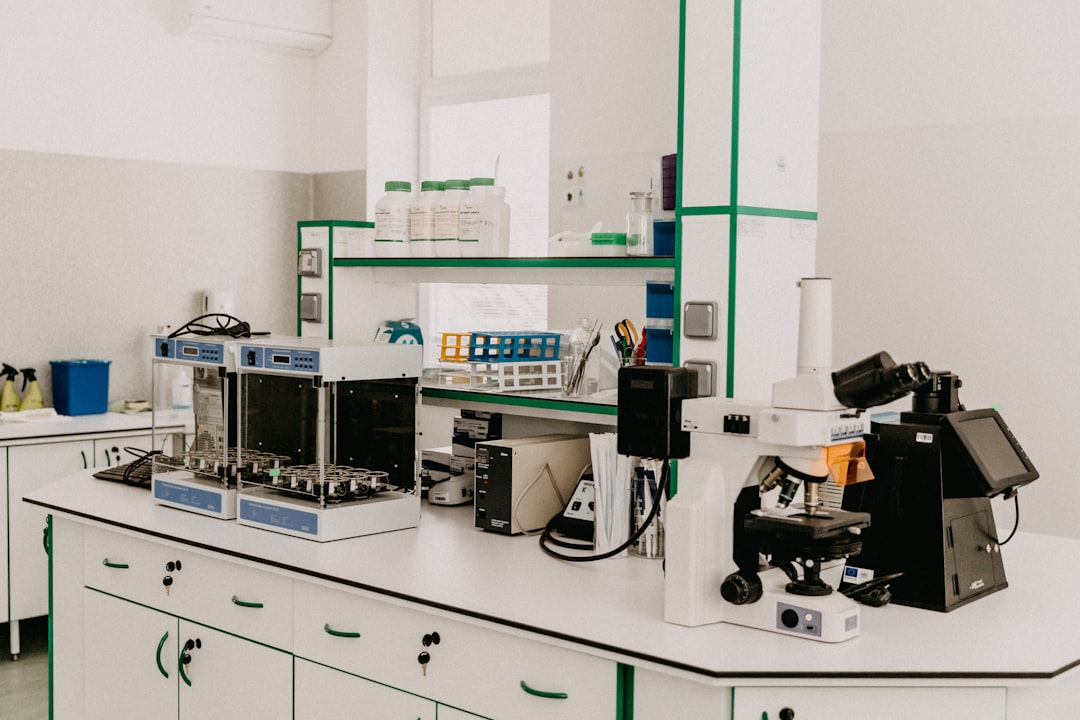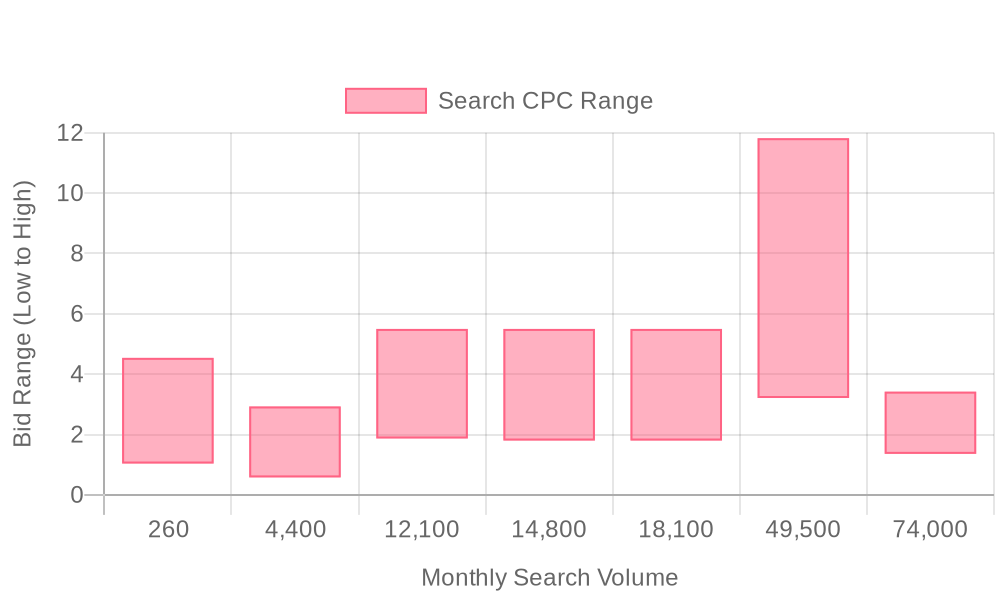
Supercharge your lead generation with a FREE Google Ads audit - no strings attached! See how you can generate more and higher quality leads
Get My Free Google Ads AuditFree consultation

No commitment
Supercharge your lead generation with a FREE LinkedIn Ads audit - no strings attached! See how you can generate more and higher quality leads
Get My Free Google Ads AuditFree consultation

No commitment
Supercharge your lead generation with a FREE Meta Ads audit - no strings attached! See how you can generate more and higher quality leads
Get My Free Google Ads AuditGet My Free LinkedIn Ads AuditGet My Free Meta Ads AuditFree consultation

No commitment
Supercharge your lead generation with a FREE Google Ads audit - no strings attached! See how you can generate more and higher quality leads
Get My Free Google Ads AuditFree consultation

No commitment
In today's dynamic marketing landscape, effectively leveraging Google Ads is crucial for businesses in the animal health sector. The ability to target precise audiences—such as veterinary clinics, animal hospitals, and pet product retailers—is enhanced by the strategic use of these ads. Modern tools have made it possible to bridge the gap between online and offline activities, capturing high-intent veterinary prospects at the exact moment they search for solutions. This is particularly valuable for companies selling animal health products, providing an opportunity to connect with prospects driven by specific needs or urgent queries such as "veterinarian near me" or "emergency pet health solutions." By utilizing these advanced platforms, businesses can intercept potential buyers precisely when they're most likely to convert, turning interest into sales effectively.

Unlocking high-value leads in the animal health sector requires precise, data-informed digital marketing strategies. By focusing on the quality of inbound prospects and streamlining campaign efforts, revenue teams can capture intent-driven buyers and maximize return on ad spend. To further refine your approach, check out this step-by-step guide for marketing pet products on Google Ads, which is especially useful for e-commerce and pet industry marketers.
Advanced marketing systems now empower organizations to enrich CRM records with granular behavioral insights from Google Ads campaigns. This enables teams to prioritize outreach, improve lead scoring accuracy, and redirect budget to channels and audiences showing the strongest buying signals. Leveraging Sona’s identification solution can reveal which companies and people are engaging with your campaigns—even if they don’t complete a form—helping you turn anonymous traffic into actionable pipeline.

Data-driven digital marketing is transforming how animal health product companies reach decision makers and pet owners. Marketers can now deliver precise campaigns that connect with veterinarians and consumers searching for targeted solutions, driving measurable results with each click. Explore more strategies in our collection of actionable guides or learn about Google's advertising policies for healthcare and medicines.
Ready to level up your veterinary marketing? Get started for free with Sona.

Modern animal health businesses need clear insight into where prospects engage with key content, from product pages to educational resources. Unifying digital touchpoints with account-level visibility reveals which organizations are currently in-market, allowing marketing teams to focus resources where intent is proven with Sona Identification.
By combining granular behavioral insights with unified data, animal health marketers can systematically uncover growth opportunities and direct their resources toward the highest-impact areas, enabling measurable gains in ROI and competitive differentiation. For a deep dive into refining retargeting approaches, review retargeting strategies. To streamline your marketing efforts, get started for free with Sona.

Modern animal health marketers face the challenge of reaching diverse, high-value audiences while maintaining compliance and maximizing return on ad spend. Audience segmentation is the foundation for relevant messaging, efficient budget allocation, and measurable growth across both veterinary B2B and pet consumer markets. For marketers seeking practical strategies, this step-by-step guide for marketing pet products on Google Ads offers actionable insights specific to the pet and animal health industry.
By applying structured segmentation, integrating real-time intent, and aligning measurement with actual business outcomes, revenue teams can elevate their PPC for veterinarians and animal health brands. Unified data and audience management transform Google Ads from a generic channel into a precision tool for sustained growth in the animal health sector. If you're ready to streamline your audience targeting and measurement, get started for free with Sona.

| Industry | Keyword | Monthly Search Volume | Competition Level | Low Bid | High Bid |
| Animal Health Products | animal health products | 260 | HIGH | 1.04 | 4.54 |
| Animal Health Products | dasuquin advanced for dogs | 4400 | HIGH | 0.58 | 2.93 |
| Animal Health Products | hill's science diet cat food | 12100 | HIGH | 1.87 | 5.5 |
| Animal Health Products | hill's science diet dog food | 14800 | HIGH | 1.8 | 5.5 |
| Animal Health Products | hill science dog food | 18100 | HIGH | 1.8 | 5.5 |
| Animal Health Products | raw dog food diet | 49500 | HIGH | 3.21 | 11.82 |
| Animal Health Products | probiotics for dogs | 74000 | HIGH | 1.36 | 3.42 |
A well-crafted keyword strategy is crucial for maximizing ROI in animal health product campaigns. By targeting both broad and highly specific terms, marketers capture demand from diverse audience segments, from general pet owners searching for over-the-counter solutions to veterinary professionals seeking specialized animal health products.
Leveraging unified data sources enables marketers to go beyond standard keyword research. By identifying which terms drive actual conversions (both online and offline), teams can iteratively refine their target terms and quickly shift spend toward keywords that deliver measurable results in animal health product promotion. Dynamic keyword lists, informed by real-time audience insights and enriched CRM data, ensure campaigns stay aligned with evolving customer intent and the latest veterinary advertising trends. For more on refining targeting, see retargeting strategies.
To see how unified data and dynamic targeting can elevate your animal health campaigns, get started for free with Sona.
Effective Google Ads campaigns for animal health products begin with structured keyword lists that map directly to your offering. Clustering keywords by product type, such as dietary supplements and medical devices, clarifies intent and segments your audience for more precise targeting. Including geographic qualifiers like “near me” or city-specific terms ensures ads surface in the regions where demand is highest, supporting both national distributors and local veterinary clinics. For marketers in regulated categories, it’s crucial to review Google’s advertising policies for healthcare to avoid ad disapprovals and ensure compliance.
Long-tail queries play a crucial role by capturing high-intent searches from buyers with specific needs, such as “flea treatment for senior dogs” or “equine joint supplement online.” Integrating these queries helps you tap into detailed customer intent, reducing wasted spend on broad, less relevant clicks. Aligning keyword selections with your broader content marketing strategy creates a unified brand experience, reinforcing messaging across channels and supporting higher conversion rates.
Advanced platforms allow marketers to go beyond anonymous clicks by identifying visitor companies and segmenting audiences based on their digital behavior and account status. For teams managing large-scale animal health product promotion, dynamic audience capabilities ensure that targeting evolves in real time, keeping campaigns relevant as prospects move through the funnel.
Ad copy must address your audience’s pain points while clearly presenting product benefits. Headlines that directly reference customer concerns—such as “Fast Relief for Itchy Pets” or “Vet-Approved Supplements for Aging Horses”—resonate with buyers and increase ad relevance scores. Incorporating trust signals, such as certifications, clinical trial results, or endorsements from veterinary professionals, builds immediate credibility and reassures risk-averse decision-makers. For additional best practices tailored to this industry, explore this guide to Google Ads for veterinarians.
Urgency drives action, especially when paired with limited-time offers or seasonal promotions. Messages like “Order by Friday for Free Shipping” or “Summer Wellness Discounts for New Clients” create a clear incentive to click. With access to real-time intent data, teams can adapt ad copy dynamically, shifting budget and creative focus to high-converting accounts as their in-market behavior changes.
Landing pages must maintain 1:1 alignment with the keywords and ad copy that drive each visit. This relevance minimizes bounce rates and streamlines the path to conversion, whether the goal is to request a demo, schedule a consult, or complete a purchase. Including customer testimonials, product reviews, and third-party trust badges further enhances credibility and instills confidence in buyers evaluating new animal health solutions. See how leading clinics build trust and conversions in this case study of veterinary hospitals using Google Ads.
A mobile-optimized, fast-loading design is essential for capturing leads across devices, particularly as veterinary professionals and pet owners increasingly conduct research on smartphones. Seamless integration of form fills and chat options supports high engagement. Unified visitor data empowers marketing teams to personalize landing page content and identify which accounts are progressing toward conversion, supporting more targeted follow-up.
Continuous campaign improvement depends on robust measurement and agile optimization. Tracking conversion pathways enables marketers to refine bidding strategies, allocate budget more effectively, and reduce wasted spend. Smart bidding tools use real performance data to adjust bids in real time, prioritizing clicks from high-value leads. For troubleshooting ad restrictions and policy questions, visit this forum discussion on pet product ad disapprovals.
A/B testing elements such as headlines, imagery, and CTA button placement reveals what resonates most with your audience, driving ongoing lift in engagement and conversion rates. Importing offline conversions—such as in-clinic appointments or distributor sales—provides a full-funnel view of ROI and ensures that campaign optimization is based on real business outcomes, not just digital signals. Platforms that sync enriched account data between CRM, sales, and Google Ads unlock granular attribution, enabling teams to precisely measure and scale what works across all animal health marketing channels.
For additional insight into best practices for retargeting strategies, explore advanced approaches to engaging high-value leads throughout the conversion journey. If you’re ready to optimize every step of your campaign, get started for free with Sona.

Reaching decision-makers in animal health requires more than broad-based advertising. With nuanced segmentation, precise messaging, and a feedback-driven optimization strategy, you can unlock meaningful growth and establish a reliable presence in the market.
Achieving success in animal health product marketing is not about one-off tactics. It requires orchestrated audience segmentation, content-driven retargeting, and tightly integrated analytics. Platforms that unify go-to-market data provide marketers with the ability to identify high-intent accounts, attribute conversions across channels, and continuously optimize campaign performance for true business impact. To see how you can streamline your growth, get started for free with Sona.
Effectively leveraging Google Ads for marketing animal health products can significantly elevate your business. By understanding the intricacies of Google's advertising policies and strategically targeting your audience, you can ensure that your campaigns reach the right people while maintaining compliance and maximizing impact.
Throughout this article, we've delved into the core challenges you face in advertising animal health products, explored the critical importance of aligning with Google’s policies, and shared strategies for reaching your ideal customers. These insights provide a roadmap to navigate the complexities of Google Ads and optimize your marketing efforts for better results.
The possibilities that lie ahead are immense. By harnessing the power of well-crafted Google Ads campaigns, you can transform your approach to marketing animal health products, driving growth and expanding your reach in an increasingly competitive landscape. Embrace this actionable guidance to advance your brand and achieve your business goals with confidence.
To truly harness these insights and take your advertising to the next level, start for free to experience our platform and its capabilities today, and see how it can unify your data and drive actionable insights for your campaigns.
Best practices include targeting precise audiences with data-informed strategies, using enriched CRM data for dynamic audience segmentation, aligning landing pages with ad content, and ensuring compliance with Google's healthcare advertising policies.
Veterinary clinics can use Google Ads by focusing on intent-driven keywords, segmenting their audience, creating tailored ad copy and landing pages, and integrating real-time intent data to prioritize high-value prospects.
Advertising animal health products is subject to Google's healthcare and medicines policies, which include restrictions on prescription products and require adherence to regulatory compliance to avoid campaign disapprovals.
Target keywords should include both broad terms like 'animal health products' and specific, intent-driven phrases such as 'buy animal vaccines online' or 'flea and tick control for dogs,' supplemented with local modifiers and negative keywords.
To create a successful campaign, focus on building targeted keyword lists, developing compelling ad copy, designing effective landing pages, and implementing data-driven optimizations to ensure continuous improvement and alignment with business goals.
Join results-focused teams combining Sona Platform automation with advanced Google Ads strategies to scale lead generation

Connect your existing CRM

Free Account Enrichment

No setup fees
No commitment required

Free consultation

Get a custom Google Ads roadmap for your business
Join results-focused teams combining Sona Platform automation with advanced Meta Ads strategies to scale lead generation

Connect your existing CRM

Free Account Enrichment

No setup fees
No commitment required

Free consultation

Get a custom Google Ads roadmap for your business
Join results-focused teams combining Sona Platform automation with advanced LinkedIn Ads strategies to scale lead generation

Connect your existing CRM

Free Account Enrichment

No setup fees
No commitment required

Free consultation

Get a custom Google Ads roadmap for your business
Join results-focused teams using Sona Platform automation to activate unified sales and marketing data, maximize ROI on marketing investments, and drive measurable growth

Connect your existing CRM

Free Account Enrichment

No setup fees
No commitment required

Free consultation

Get a custom Google Ads roadmap for your business
Over 500+ auto detailing businesses trust our platform to grow their revenue
Join results-focused teams using Sona Platform automation to activate unified sales and marketing data, maximize ROI on marketing investments, and drive measurable growth

Connect your existing CRM

Free Account Enrichment

No setup fees
No commitment required

Free consultation

Get a custom Google Ads roadmap for your business
Over 500+ auto detailing businesses trust our platform to grow their revenue
Join results-focused teams using Sona Platform automation to activate unified sales and marketing data, maximize ROI on marketing investments, and drive measurable growth

Connect your existing CRM

Free Account Enrichment

No setup fees
No commitment required

Free consultation

Get a custom Google Ads roadmap for your business
Over 500+ auto detailing businesses trust our platform to grow their revenue
Our team of experts can implement your Google Ads campaigns, then show you how Sona helps you manage exceptional campaign performance and sales.
Schedule your FREE 15-minute strategy sessionOur team of experts can implement your Meta Ads campaigns, then show you how Sona helps you manage exceptional campaign performance and sales.
Schedule your FREE 15-minute strategy sessionOur team of experts can implement your LinkedIn Ads campaigns, then show you how Sona helps you manage exceptional campaign performance and sales.
Schedule your FREE 15-minute strategy sessionOur team of experts can help improve your demand generation strategy, and can show you how advanced attribution and data activation can help you realize more opportunities and improve sales performance.
Schedule your FREE 30-minute strategy sessionOur team of experts can help improve your demand generation strategy, and can show you how advanced attribution and data activation can help you realize more opportunities and improve sales performance.
Schedule your FREE 30-minute strategy sessionOur team of experts can help improve your demand generation strategy, and can show you how advanced attribution and data activation can help you realize more opportunities and improve sales performance.
Schedule your FREE 30-minute strategy sessionOur team of experts can help improve your demand generation strategy, and can show you how advanced attribution and data activation can help you realize more opportunities and improve sales performance.
Schedule your FREE 30-minute strategy session





Launch campaigns that generate qualified leads in 30 days or less.
